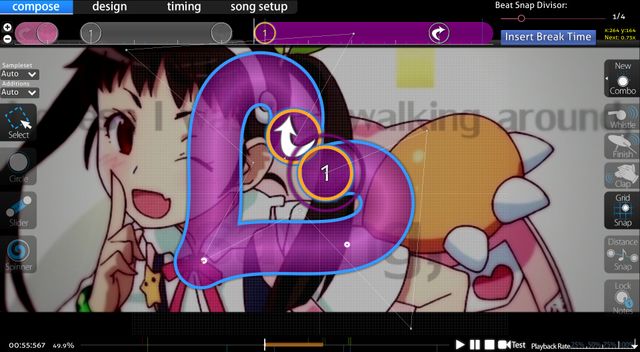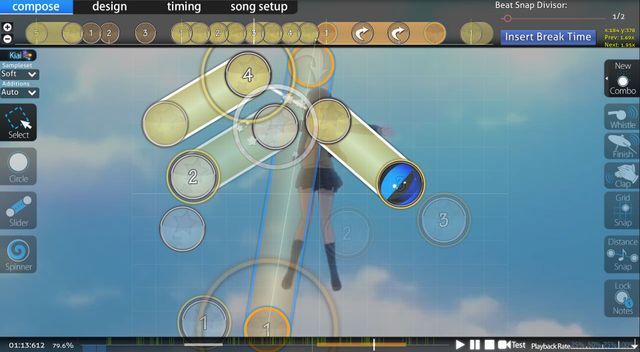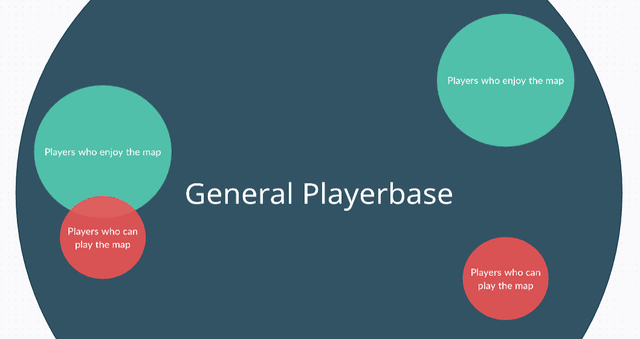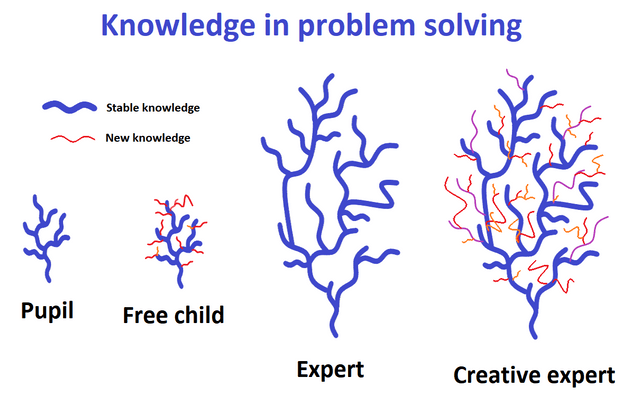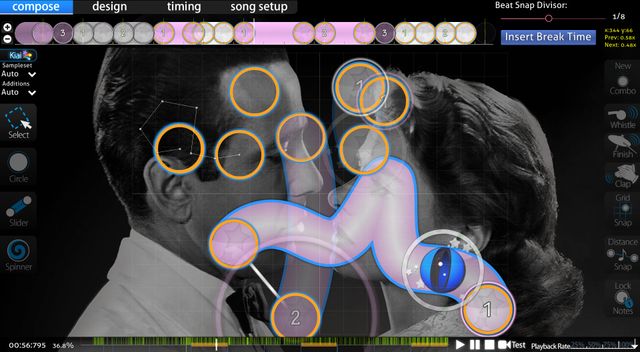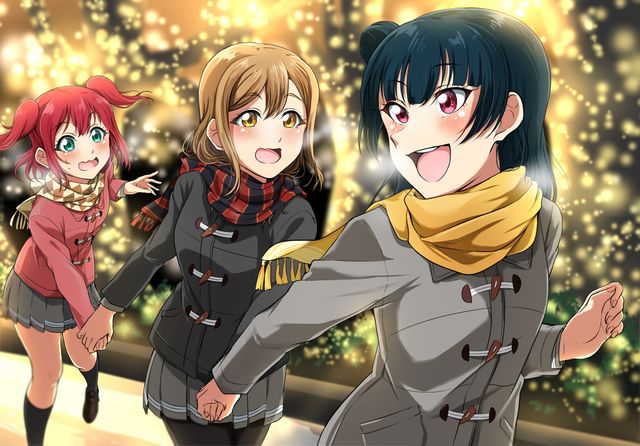Weight
2021-06-08
some mapping concepts btw: when I follow a different layer of the music that would otherwise be unexpected by the player I tend to use a unique slider shape relative to the rest of the section to help differentiate it
also I use longer combos to help players remember certain parts of the map (since everything isn't the same combo)
longer combos in general allow u to do some cool stuff since if you usually NC every 1 measure then have a part where u NC after 2 measures then you emphasize both measures with one uniform combo
also I tend to use different quadrants of the playing field based on the song (whereas other mappers focus on placing objects in such a way that it fits with the map structure around it, not taking the song into account)
when deciding which quadrant to use I think the cartography pdf is relevant
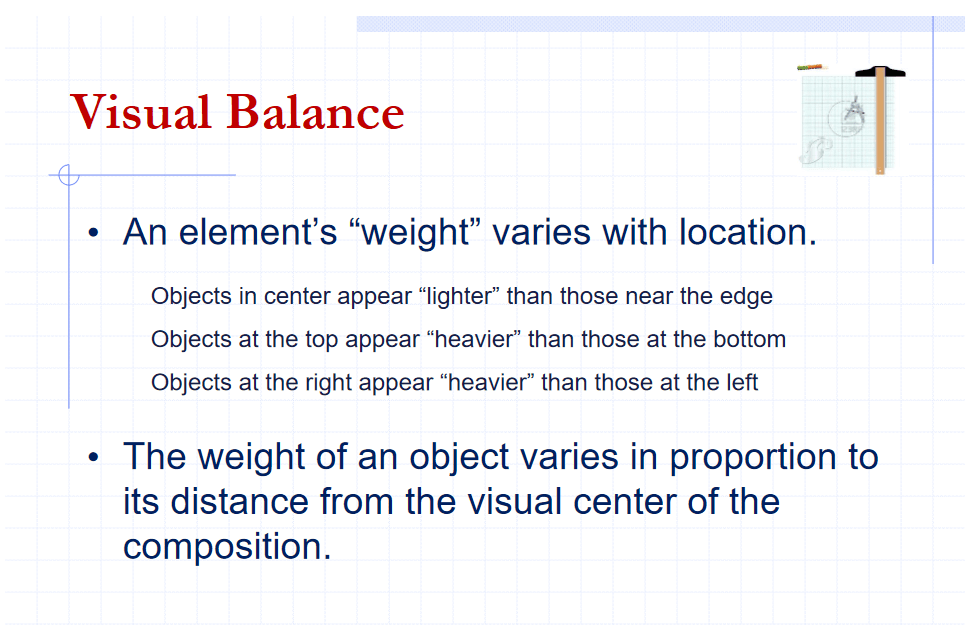
don't remember if any of u read this but pretty big concept imo
take out the imo since it's part of design in general
going to start a new movement "weight mapping" and "weight mappers"
The movement-weight hypothesis: an object with more weight than the object before it is said to have heavier movement than an object with less weight than the object before it
now all that's left to do is to write a proof and mathematically calculate the heaviness of movements based on angles/slider velocity/x,y coordinates etc
then use the resulting algorithm to create a mapping tool that shows the ideal heaviness in movements for mappers as they're mapping
fun to think about and technically possible, although I don't know if anyone wants to spend their time doing that.... lol
2021-06-10
would be so easy to make this slider go downward to follow the map but I want it to point upward to follow the song
I assume a lot of mappers don't bother with remapping for motion and just do whatever
kinda hard to remap this part since I based it on stacking so I have to change all the stacks
2021-06-23
the reason I've taken a liking to thinking about weights in osu mapping is probably because older mappers used weight as a mapping technique without thinking about it (since the AR was lower and there were more objects on the screen, visual mapping relative to those objects was more relevant, and thus mappers may have used ideas found in design theory for their maps unconsciously)
newer maps tend to ignore this idea of weights and focus more on the experience of playing the objects at a specific moment instead (presumably because of high ar, slider tails no longer being used, etc)
since I have a lot of mapping experience with low diffs (and thus low ar) this could explain why I prefer using weights in my mapping (there are more objects on the screen at once and players spend more time in specific quadrants of the playing field, versus higher diffs that tend to move around the playing field faster
even my 2014 maps show weight theory in action (e.g. for https://osu.ppy.sh/beatmapsets/162996#osu/471782) I intentionally use sliders that point downward/upward and different quadrants of the playing field based on the song)
the art of whether to curve a slider like this
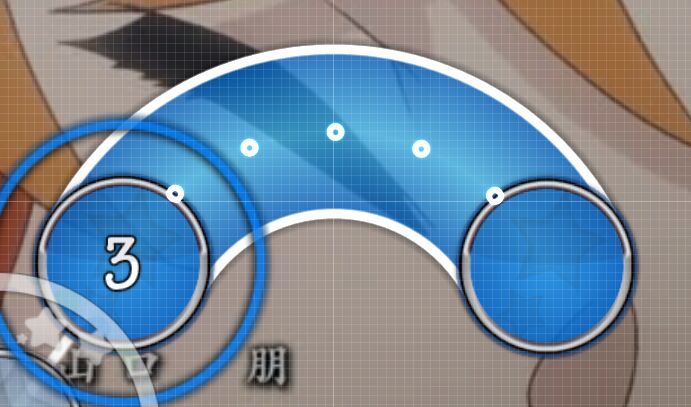
or like this
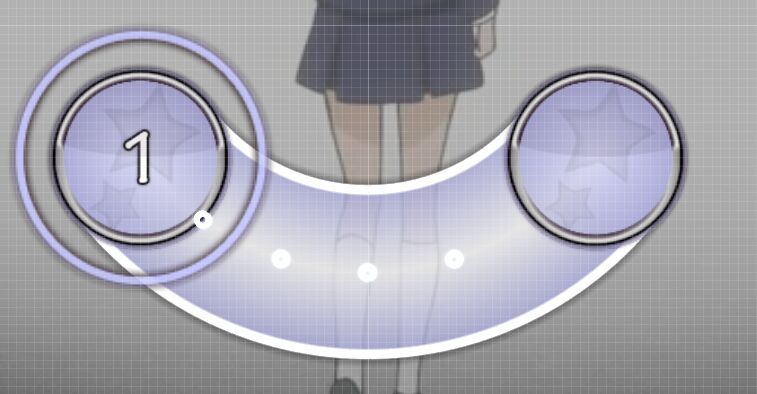
is something I took seriously since as early as 2014
the map also intentionally uses the lower half of the playing field for 00:58:831 - and goes up during 00:59:998 - before finally reaching the maximum weight at 01:02:664 - which also happens to be the start of the next half of the chorus + NC etc
sucks that so many new mappers are only ranking hard+ sets and never mapping low diffs
you can actually tell that these mapper tend to ignore weight in mapping (probably because they don't know about it from only mapping high ar)
2021-06-27
one of the reasons I like fanzhen's real to me map so much is that I believe it takes weight into account
part of the reason fanzhen's sliders go so well together is from taking visual balance into consideration
also like how fanzhen uses sliders that go up/down depending on the song (like I do lol)
you don't have to restrict this idea to just sliders btw you can also use movements that go up/down depending on the song
in other words, you can use heavier or lighter movements depending on the feeling of the song
just as one example 03:58:204 (2,3,4) - is heavier movement than 03:58:204 (2,3,1) - (can you see why?)
this part 02:29:758 - is one of the obvious examples of weight mapping although most of the map takes weight into account
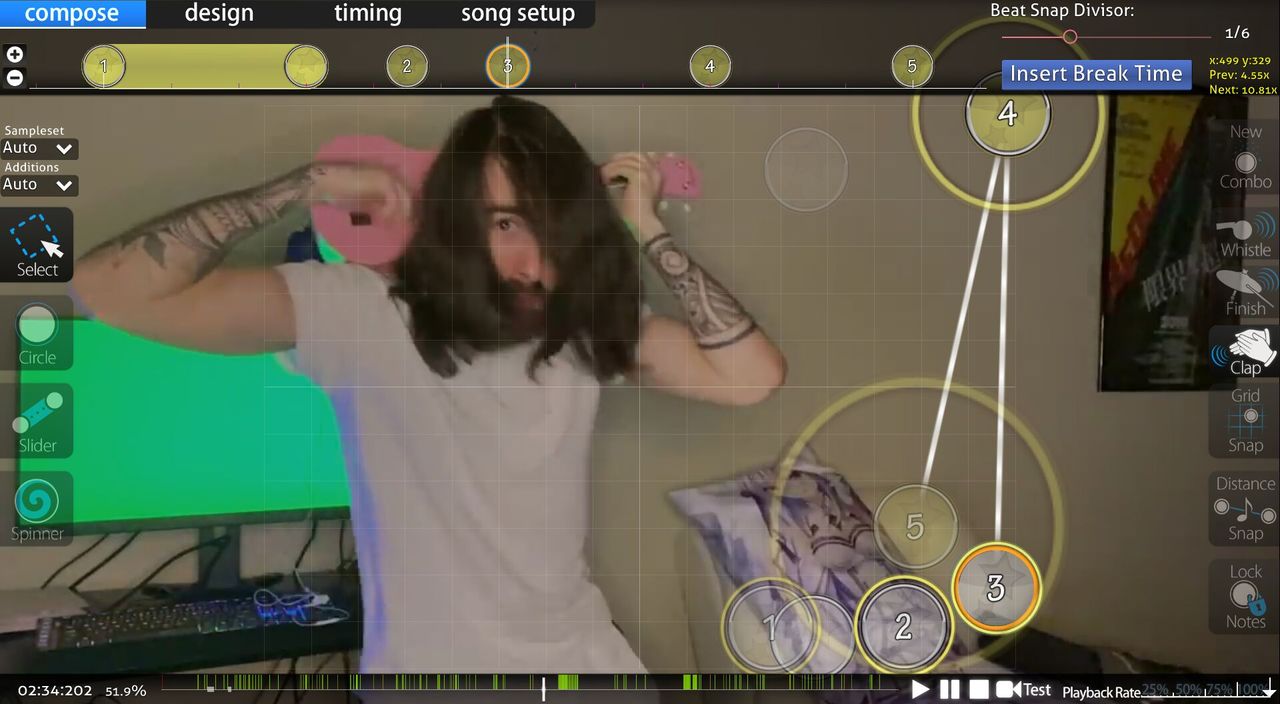
in contrast the top diff on https://osu.ppy.sh/beatmapsets/967499#osu/2885424 is an example of a map that doesn't take weight into account
sure it's fun/playable/rankable/etc but from a mapping pov weight wasn't considered in the making of it
this is one of the best examples of weight mapping in this diff
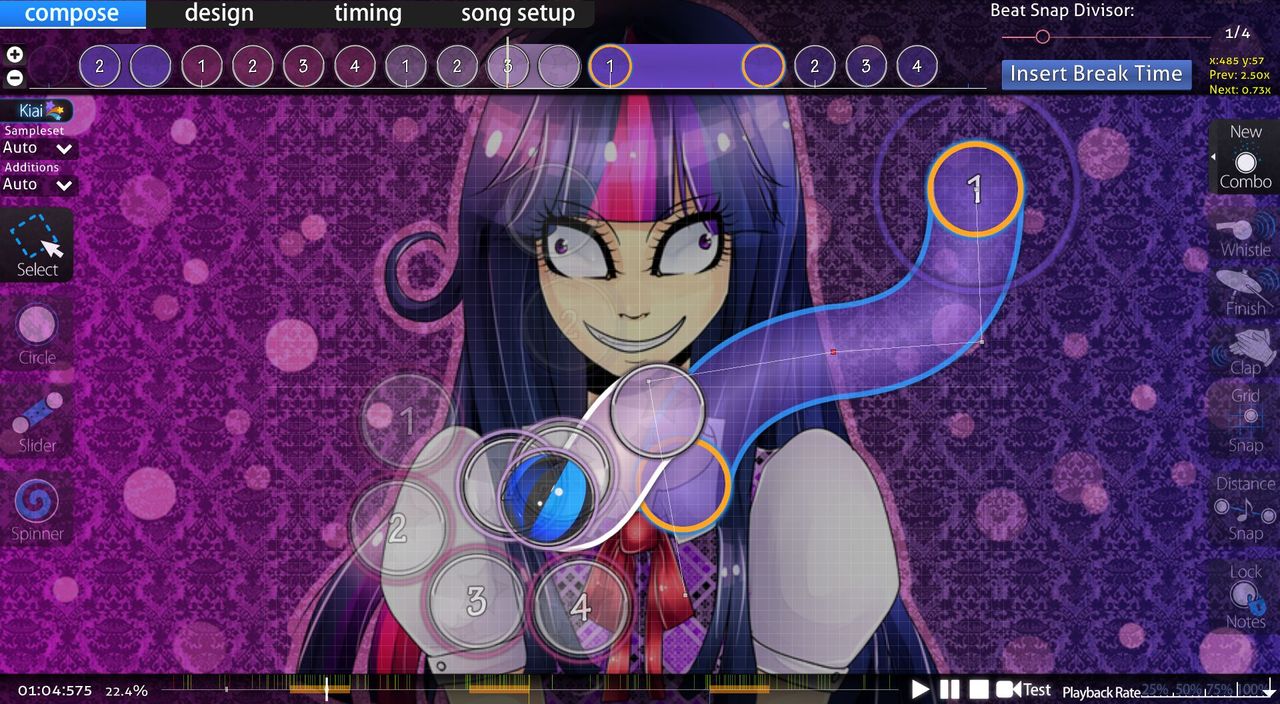
mapper isn't thinking in terms of weight though so this cool pattern was kinda rng and the rest of the map doesn't follow any specific weight patterning
https://osu.ppy.sh/beatmapsets/1500970#osu/3075676 is an example of a map that takes weight into account (whether intentionally or not)
flux3on is a new mapper but one of my favorite mappers simply due to how clean her symmetry style is (don't think I've seen anything like it before)
anyway with such a symmetry restriction how you place objects is more important
I think for this reason mappers that focused on symmetry in their mapping take weight into account more and using up/down movements based on the song
when mapping in this style whether or not the start of your NC is above the x-axis or below the x-axis is kinda a big deal
but when mapping became more free-form these ideas of having to care more about such visuals (lower ar = more objects on the screen at once etc) were lost
older mappers like fanzhen were around during this era and thus take weight into account
and since most new mappers/players aren't exposed to maps with weight taken into account (high ar, freeform, etc) their maps tend to ignore weight as well
